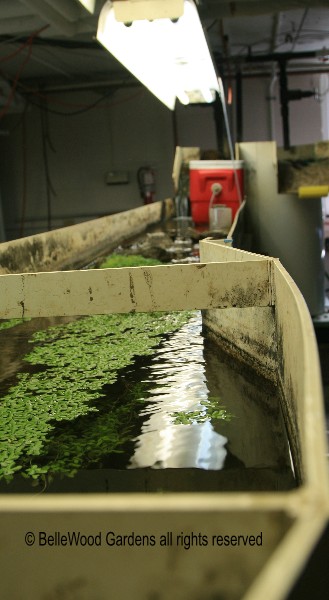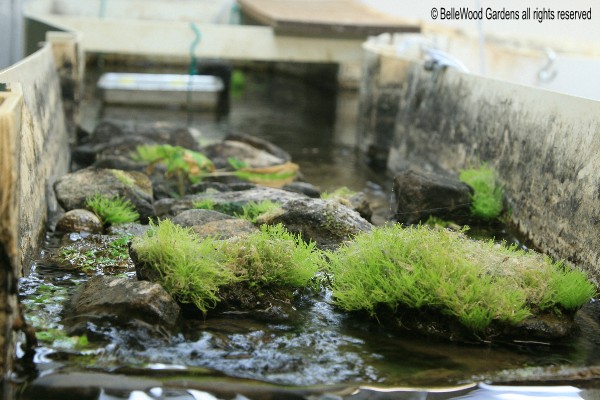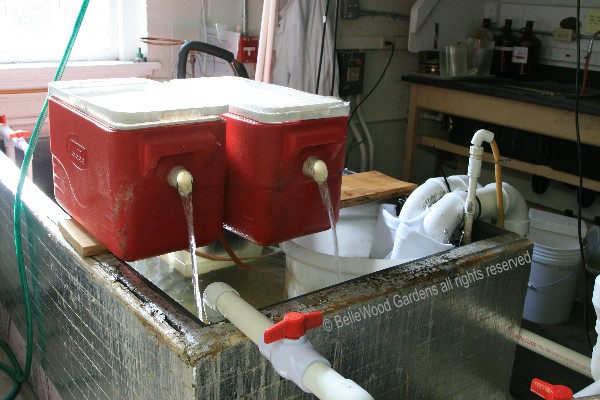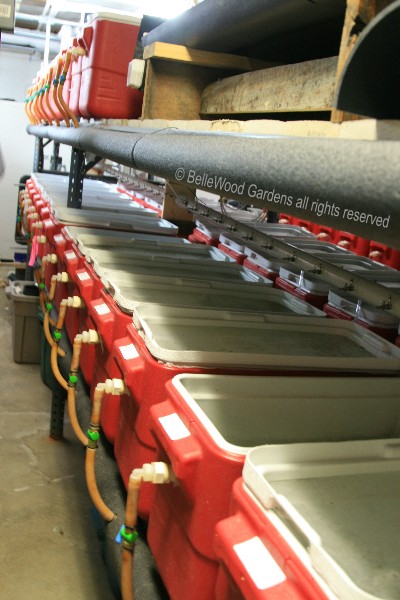
Thursday, 3 September 2009
Stroud Water Research Center
A brief drive to Avondale, Pennsylvania for the second stop of our PLNA Sustainable / Green Infrastructure Field Day, at the Stroud Water Research Center.

Before we even get in the door I'm taken with the salmon leaping upstream.
In Japan, a stone at the base of a garden waterfall, splitting the flow is
symbolic of a carp attempting to reach the head of the falls. If successful
the fish becomes a dragon and will fly away.
First we listen to a brief lecture about the history, goals, research, and methodology of the center. Their focus is on the study of fresh water streams and their health. For example: take a water sample and test it for pollutants. At the moment it might be clean. But, if certain invertebrates, perhaps caddis flies, are absent, indications are that there was pollution that killed them off at some previous point in time. Or, if there is a change, a rise in temperature (perhaps release from a power plant cooling system) which is more harmful - a greater increase for a shorter duration, or a lesser but more prolonged temperature rise. Think of a question, then develop a study that will find an answer. And afterwards, publish. Accept projects from commercial clients, but with the clear understanding that funding does not dictate results. What we find out, what we learn, that's what we publish.

The Commonwealth of Pennsylvania classifies the White Clay Creek watercourse
as being of exceptional quality. Research is done here at the Stroud Research Center
on stream ecosystem structure and function as a long term project. The creek comes
indoors, having been given a brief detour into the research center itself. Fascinating.

It even smells like a stream. At certain times of year the mayflies wash in, and in the morning
their hatching multitudes form a cloud above the channeled water course. But no fish to leap and feed.

Invertebrates, small ones, may bypass the filters. but not macro vertebrate life forms.

Canning jars put to uses other than summer's bounty for winter's meals.

Picnic coolers adapted into fish tanks, each with ten small fish fry, carefully raised
at a constant temperature for later study in the thermal project I earlier mentioned.
Fascinating research is being done. How important is the riparian forest?
Are dead leaves falling into the water an important part of the ecosystem?
What if the streamside trees are conifers? Deciduous? Tropical habitat?
Science in the service of the countryside. We're here, we won't go away.
What can we, should we do to keep the waters of life clean and healthy?
And then back to North Creek Nurseries for nursery tours and dinner, grand end to a wonderful day.
Back to September 2009